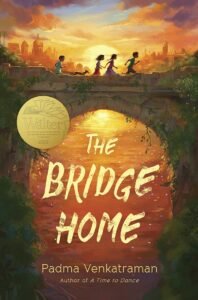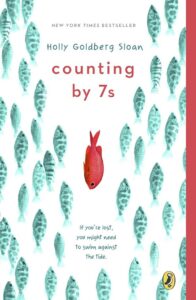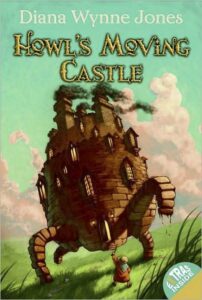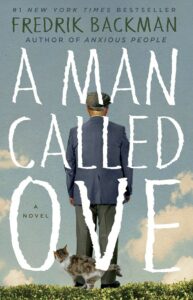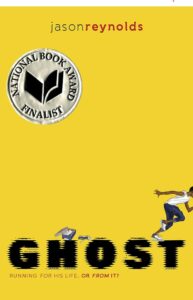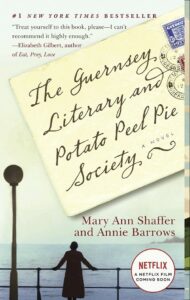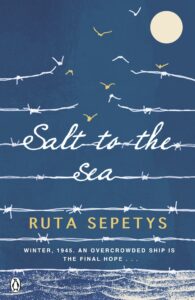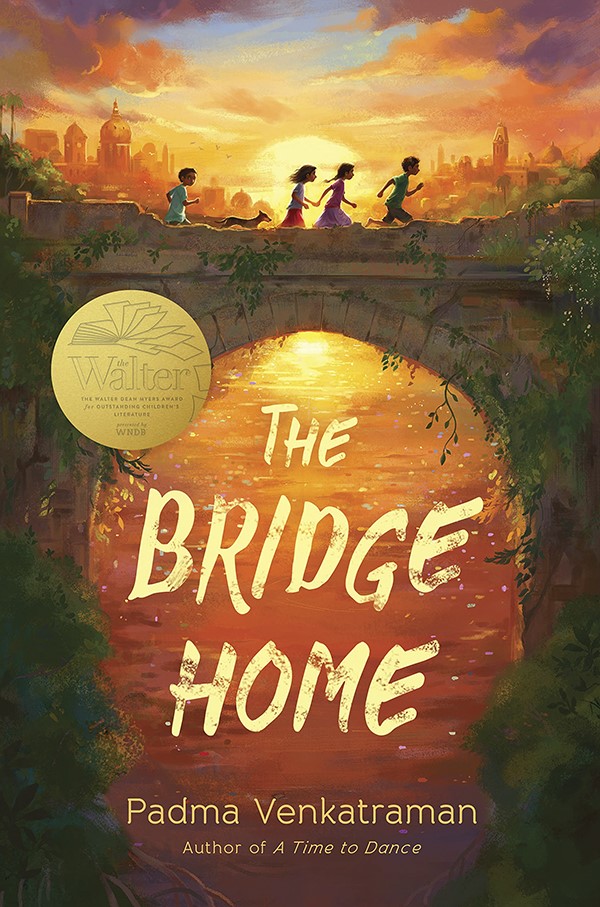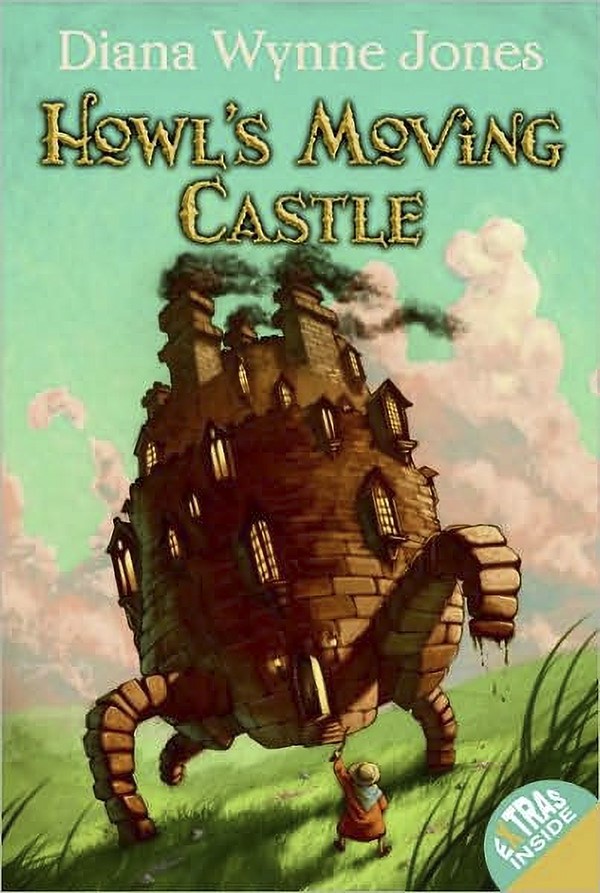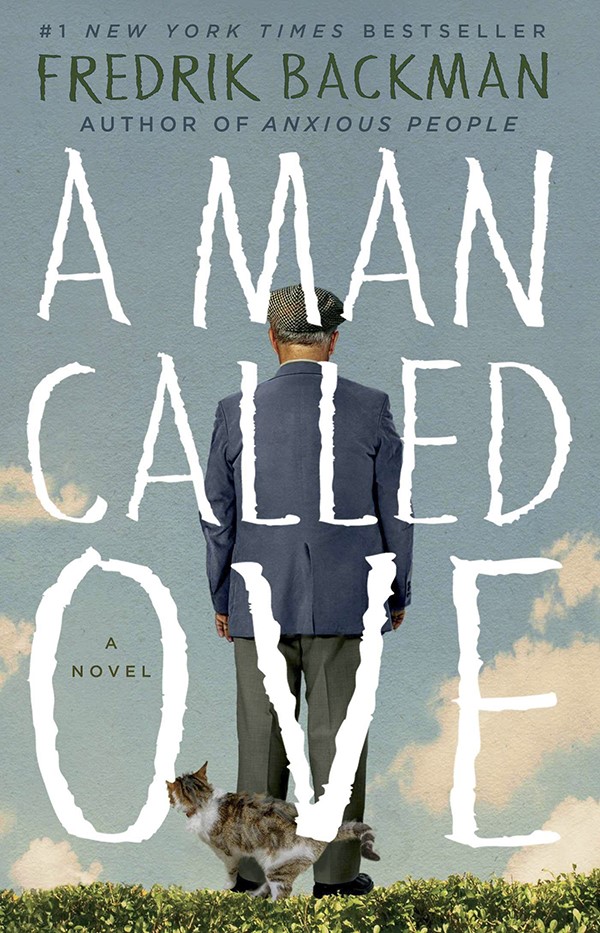The ideas in this article spring from three important identities I carry in my heart: reader, teacher, and child in the family of God. I have spent my career as a teacher, both in K–12 schools and higher education, thinking about how to best teach literature in a way that produces not only literate and knowledgeable students but also students who see and value God’s truth in stories. I have not always succeeded at reaching these worthwhile goals, but I am grateful to still be discovering and articulating ways to do so.
Throughout the eleven years that I taught high school English, I mostly approached texts with my students in the same way I had been taught: as whole-class reads with a schedule, homework checks, discussions, and some sort of summative assessment (mostly papers or projects). I also included a variety of attempts at independent reading and book-club style group reading, inspired by reading workshop enthusiasts such as Nancie Atwell (In the Middle) and Donalyn Miller (The Book Whisperer). While students in my classroom learned and achieved a measure of success in reading with each of those instructional approaches, I never felt as if I was able to help students make authentic connections between their whole-class and independent reading.
Those connections, as well as an instructional approach that would enable them, were on my mind as I designed an English Methods course for future middle school and high school English teachers a few years later. I have taught the college course twice, in the fall semesters of 2020 and 2022, and a significant part of the course includes exploring with future teachers how to structure literature units, how to effectively teach literacy skills, and how to choose and approach a variety of texts.
Roberts begins the book by outlining the “debate” between reading experts who advocate for whole-class texts and those who advocate for independent reading or reading workshops.
One of the resources that has been essential to this part of our work together has been the book A Novel Approach: Whole-Class Novels, Student-Centered Teaching, and Choice by Kate Roberts. Roberts begins the book by outlining the “debate” between reading experts who advocate for whole-class texts and those who advocate for independent reading or reading workshops (4). Drawing on educational research, literacy experts, and her own experiences in the classroom, she clearly describes both approaches, including their advantages and shortcomings:
A whole-class text approach revolves around tough, widely read, complex texts chosen by teachers or schools. This approach, advocated for by literacy experts such as Tim Shanahan and Doug Lemov, ensures that students read a wide range of texts that they would not otherwise pick up on their own. Teachers can guide students in rigorous shared-learning experiences with difficult texts that can help prepare them for college. However, this approach is complicated by varying skill levels of students, a lack of diverse representation in the canon, and the time-consuming nature of the approach.
An independent reading or workshop approach revolves around reading strategies and skills taught by teachers that students then use to read books of their own choosing. Advocates of this approach, including the two authors mentioned above—Nancie Atwell and Donalyn Miller—as well as Kelly Gallagher and Penny Kittle, argue that students need to read a large volume of books in order to become fluent readers, and that choice motivates students to read in ways that teacher-chosen novels do not. However, this approach is less effective when students fail to choose increasingly difficult texts, and it limits students’ exposure to seminal texts. It is also difficult to manage and requires a significant investment in classroom libraries.
Instead of choosing one of these approaches over the other, Roberts endorses them both and argues that teachers can strategically blend them together for students’ benefit: “I am suggesting that by thoughtfully, intentionally taking some of the best of different teaching methodologies, while always holding onto some research-based, core beliefs, we can help our students flourish in ways that teaching only one way may not” (6). She spends the rest of the book outlining this approach in detail, describing how to organize a course around both whole-class and independent reading, united by the teaching of literacy skills as required in the Common Core Standards.
Our English Methods class spends the first part of our semester reading Roberts’s book, responding to it, and trying out her curriculum design. I model read-alouds and mini-lessons, and then the class of future teachers designs their own and teaches them to each other. We look deeply at standards and discuss how and when they should be addressed. We think about relevant book choices, read together, and make recommendations. As a final assessment, future teachers design a literature unit that includes both a whole-class novel and an independent choice book. In their units, they scaffold the literacy skills they want students to learn by introducing the skills in the whole-class novel before asking students to practice those skills independently in a choice book. The two experiences—the whole-class read and the independent book—are united through studies of the author’s craft, theme, characterization, symbolism, or plot structure. The book choices are connected as well, as future teachers think about how to match choice books with whole-class novels using themes, authors, genres, time periods, or other touchpoints.
Most importantly, we wrestle with what it means to teach literature as Christians: how can we invite students into stories that help them better understand God and his world while also teaching them the literacy skills they will need to be flourishing students, citizens, workers, family members, and disciples? How can we honor students as image-bearers who deserve autonomy and choice while also designing formative community reading experiences in which we learn from and with each other? How can we help students appreciate the beauty of a revealing symbol, a finely crafted sentence, or a universal theme, seeing them as God’s good gifts?
How can we help students appreciate the beauty of a revealing symbol, a finely crafted sentence, or a universal theme, seeing them as God’s good gifts?
One of the ways that we answered those questions together during the fall 2022 semester of English Methods included gathering book recommendations. We wanted a list of books for both whole-class and student choice novels that are beautiful and ripe with literary elements to study. We also wanted those books to unveil part of God’s creation, fall, redemption, and restoration narrative in a new way for students. One of the members of our class came up with the idea of uniting our list with a “found family” trope.
Common in literature, TV, and movies, the idea of a found family—a group of unrelated characters who form tightly knit, familial bonds—is also a beautiful metaphor for the kingdom of God. Indeed, the apostle Paul eloquently lays out our place in God’s found family in Romans 8:14–17:
For those who are led by the Spirit of God are the children of God. The Spirit you received does not make you slaves, so that you live in fear again; rather, the Spirit you received brought about your adoption to sonship. And by him we cry, ‘Abba, Father.’ The Spirit himself testifies with our spirit that we are God’s children. Now if we are children, then we are heirs—heirs of God and co-heirs with Christ, if indeed we share in his sufferings in order that we may also share in his glory.
Using “found families” as our uniting element, we read and reviewed a variety of books to share with each other and a wider audience of teachers. While many books commonly taught in classrooms employ this trope, our list offers lesser known but valuable titles that cross genre, difficulty, and grade level. Because we also wanted teachers to get a feel for the book and be able to envision how it might be used in their classrooms, our list includes a summary, review, and suggestion for classroom use with each entry. Our hope is that our reviews of these titles are useful for teachers as they design literacy instruction that helps students find their unique place in God’s family and equips them with the skills they need to flourish in it.
Abby De Groot, EdD, Assistant Professor of Education, Dordt University
The Bridge Home, by Padma Venkatraman
Reviewed by Lindsay Kuiper
Suggested grade level: 5–8
Lexile: 680L
Genre: Contemporary realistic fiction
Poignant excerpt: “We saw more people that one day than we’d seen our whole lives. But nobody noticed us. We were in plain sight. But we were invisible” (41).
Summary: Padma Venkatraman brings us on a journey of two sisters who face homelessness, hunger, and hostility. Fleeing an abusive household, protagonists Viji and Rukku must survive on their own at just eleven and twelve years old. The younger sister, Viji, often feels compelled to sacrifice her own needs for the benefit of Rukku, who experiences developmental disabilities. Together, they find shelter with two other runaway boys on a dilapidated bridge. Having been betrayed before, Viji is initially wary of the two boys, Arul and Muthu. She comes to trust them in time, and the bunch ultimately learns how to care for each other as a family. The four children exhibit heroism whenever they encounter corruption on the streets of Chennai, India. Viji is motivated by providing for her and her sister. Her dignity, however, prompts her to find honorable solutions for making money. Arul and Muthu train Viji and Rukku in the art of scavenging waste piles, a trade that gives them purpose and a means to live. Through the ups and the downs, the group discovers what it means to selflessly love each other.
Review: The Bridge Home is an empathy-inspiring narrative appropriate for a whole-class novel in the middle school classroom: the chapters are concise, the language is comfortably challenging, and the content is culturally immersive. The story is written in the first and second person and takes the form of a letter from Viji to Rukku. This consistent use of “you” within the novel compels readers to put themselves in the shoes of the characters. Although some ideas are tough to digest, students will be able to learn the skill of interpreting themes.
There are many diverse themes to explore, such as religious diversity, the effects of the caste system, and the power of camaraderie. Through these themes, students will be challenged to think critically about the perspectives of children in India, and readers should find themselves contemplating their own position and beliefs. Neither Viji, the narrator, or the book itself come to any solid conclusions about God, but the author portrays Christianity and Christians as sources of help and hope in the book, which could lead to fruitful class discussions.
Riddled with metaphors and similes, Venkatraman skillfully paints a beautiful portrait of four kids whose stories are rarely in the limelight. She uses a distinct, refreshing gentleness in her writing that will certainly strike a chord with anyone who encounters this book. The characters are complex and delightful: we hurt when they hurt; we rejoice when they rejoice. She presents the difficulties of poverty in an understated way, showing how the characters’ perseverance in their daily life is met without fanfare. The story simultaneously warms and wrenches the heart, making this an excellent choice to engage students from all backgrounds.
Counting by 7s, by Holly Goldberg Sloan
Reviewed by Missy Driesen
Suggested grade level: 5–8
Lexile: 770L
Genre: Contemporary realistic fiction
Poignant excerpt: “Maybe that happens when you’ve been through a lot. All of your edges are worn off, like sea glass. Either that, or you shatter” (187).
Summary: Willow Chance is a “highly gifted” twelve-year-old girl who has a hard time fitting in and finds it difficult to make friends because of her eccentricities. She loves plants, is fascinated by medical conditions, and is fixated on the number 7. She is the only child of her adoptive parents, who adore her and do their best to fulfill her unique interests. Her world feels as though it is beginning to crumble when her best friend moves away and middle school turns out to be a difficult adjustment. Then, the unthinkable happens, and Willow unexpectedly loses both her parents in a car crash. She has no friends or family to take her in, but Mai, a girl that Willow has just met through her sessions with the guidance counselor, convinces her mother to take her in. Through many trials and unexpected events, Willow comes to piece together a most unique family in the most unusual places.
Review: Holly Goldberg Sloan beautifully captures the essence of Willow Chance in this novel. Not only do we get to understand Willow as a “highly gifted” misfit, but we are given a glimpse into the inner workings of her uniquely functioning mind. The reader gets to know Willow on a deep emotional level and will fall in love with her, just like all those who choose Willow to be their family by the conclusion of the novel.
Writing from Willow’s perspective, the author beautifully captures the essence of what it is to be a young genius dealing with unimaginable loss. Because of the exceptional way in which Willow’s brain works, how she handles many of the situations that come her way is often quite unusual. Yet, we also see the very normal emotions that come from grief and loss in Willow as well. The author does something special in the juxtaposition she creates between Willow’s extraordinary genius persona and the ordinary way a young girl deals with sorrow and loss.
The book deals with issues of adoption, loss, giftedness, cultural differences, and the court/foster system. Although not Christian in perspective, the novel wonderfully displays the characteristics of caring for those who are in need, loving the neighbor, and “[b]ear[ing] one another’s burdens, and so fulfill[ing] the law of Christ” (Gal. 6:2 ESV). The novel would be a great inclusion in the classroom as a mentor text for descriptive writing or personal narrative, but at 378 pages, it could be a little long for a whole-class novel. It is not likely to be challenged; however, the book could be a sensitive read for some students because of the heavy subject matter. Overall, the book would work very well as a reading circle book, mentor text, or addition to any classroom library.
Howl’s Moving Castle, by Diana Wynne Jones
Reviewed by Aleasha Hintz
Suggested grade level: 6–9
Lexile: 800L
Genre: Fantasy
Poignant excerpt: “In the land of Ingary, where such things as seven-league boots and cloaks of invisibility really exist, it is quite a misfortune to be born the eldest of three. Everyone knows you are the one who will fail first, and worst, if the three of you set out to seek your fortunes” (1).
Summary: Sophie Hatter is a victim of superstition in her magical world, where the eldest of three is sure to fail should they ever leave home and seek their own fate. Yet, Sophie willingly plays her part until, one day, she unknowingly offends the Witch of the Waste, who transforms her into an old woman. Having no other options, Sophie’s situation compels her to leave her home and find a cure in the roaming castle in the hills. The castle is occupied by the Wizard Howl, along with a magic-bound fire demon named Calcifer and Howl’s apprentice, Michael. Sophie must learn to handle Howl, strike a deal with Calcifer, and finally face the Witch of the Waste to disentangle the horrid curse. All the while, Sophie discovers that there is more to Howl and herself than meets the eye.
Review: Howl’s Moving Castle is a charming novel. It takes her a while, but eventually Sophie finds a home with Howl, Calcifer, and Michael. The troupe is bound together by what they were forced to endure: curses upon curses and a final battle with the Witch of the Waste. This book exhibits the “found family” trope, but it is subtle. The strong personalities of each character clash often, but they care for one another despite their more disagreeable traits, such as Sophie’s learned willfulness and Howl’s vanity.
The draw of this book is found in its unique world building, something that will appeal to fans of the fantasy genre, without going over anyone’s heads. The book’s syntax is accessible to young and struggling readers. However, the plot quickly becomes confusing and unclear. If the reader is not paying close attention, it is likely that they will muddle through the middle of the book: the important details are easy to miss.
There are a few potential points of conflict in this book, such as frequent use of magic (including pentagrams) and a brief scene of drunkenness from the Wizard Howl. The book is quite tame overall, but due to these complications and the book’s complex plot, it may not serve all classrooms and readers. This novel is ideal for middle school and even early high school classrooms, where students could study its unique characterization and setting, as well as themes of destiny, courage, and love. The book begins and ends quickly, leading to a lengthy middle section, and therefore is better suited for book clubs, self-choice reads, and classroom libraries than for whole-class readings.
Ghost, by Jason Reynolds
Reviewed by Abby De Groot
Suggested grade level: 6–9
Lexile: 730L
Genre: Contemporary realistic fiction
Poignant Excerpt: “And I felt . . . good. Different. Like, even though they were all stunned by what I said, I felt like they could see me. Like we were all running the same race at the same speed” (133).
Summary: In this first book of the Track series, Jason Reynolds tells the story of Castle, AKA Ghost, a teenage boy who is running away from his traumatic past mostly through picking fights at school and gnawing obsessively on sunflower seeds from Mr. Charles’s neighborhood store. One day, however, when he stumbles upon a city youth track team practice after school, he decides to actually run, challenging one of the team’s best runners to a race in the middle of practice. His stunt and immense natural talent earn him a place on the team, made up of an eclectic group of athletes led by tough and tenacious Coach Brody. As Ghost tries to figure out what it means to be a teammate, new and old obstacles threaten to undo the bonds he is forming on and off the track with his new team.
Review: Ghost is an incredibly likable and realistic character in a fast-paced plot, making Ghost a great book choice for a whole-class novel in a middle school or early high school classroom. Readers can’t help but root for Ghost, even as they may shake their heads at his self-sabotaging choices. As an author, Jason Reynolds uniquely captures the everyday experiences and conversations of middle school and team sports, while also thoughtfully presenting the lasting effects of unhealed trauma.
Written from Ghost’s first-person perspective, the novel lends itself well to studying the author’s craft, including point of view, direct and indirect characterization, and voice. This also makes it a great choice for a read-aloud, perhaps an uncommon approach for these grade levels, but a delightful idea for this novel. The audiobook, which is only 3 hours and 29 minutes long, could be a useful tool for this purpose and would give students an even more visceral experience of Ghost’s voice and story. While there is some description of violence in this book, it is not graphic, and it is unlikely to be challenged. The accessible reading level and relatable adolescent experiences help cement this book as a solid whole-class novel choice.
A Man Called Ove, by Fredrik Backman
Reviewed by Jayden Hoksbergen
Suggested grade level: 10–12
Lexile: 870L
Genre: Contemporary realistic fiction
Poignant excerpt: “People said Ove saw the world in black and white. But she was color. All the color he had” (45).
Summary: A Man Called Ove tells a story about Ove, a curmudgeonly man learning to live on his own after his wife’s death. A stickler for both rules and routines, Ove spends his time in retirement getting angry at those who break the neighborhood rules. Ove’s new neighbors, Parvaneh, Patrick, and their children, drag him into the very troubles of his neighbors that he’s been avoiding for years. Through the many misfortunes of her family and her refusal to take no for an answer, Parvaneh forces Ove to remember what it feels like to help other people and gives him purpose in his life again. Ove’s newfound (though reluctant) friendships help him begin to honor his wife through showing love—the love she so freely gave him. Review: This “found family” book is somewhat unique because of the ages and situations of the family. Many found families in stories are younger people, typically all the same age, whereas Ove, an old man, finds family in his neighborhood of diverse people. Furthermore, Ove might be the most resistant character to a found family in all of literature—his cranky attitude toward those who are trying so hard to include him makes for a heartwarming humor throughout the book. The mood throughout the whole story is bittersweet. We see an old man trying to deal with the death of his wife, a man who is so exhausted with life without his wife that he wants to kill himself. However, we also see the friendliness of his neighbors, who, despite their flaws, want to look after Ove and help him find meaning in life. We get to see Ove’s character arc through the story from being a grumpy man who cares about no one to a man who holds people close to his heart (albeit, still grumpily).
This is an abridged version of this article. To read more, subscribe to the print or digital edition of Christian Educators Journal.
This article was written by the members of Education 354: Methods of Teaching Middle School and High School English at Dordt University, Fall 2022. Collectively, they enjoy thinking, reading, writing, teaching, and 8 AM field trips for coffee and muffins.
Works Cited
Atwell, Nancie. In the Middle: New Understandings about Writing, Reading, and Learning. 2nd ed., Heinemann, 1998.
Backman, Fredrik. A Man Called Ove. Washington Square, 2015.
Jones, Diana Wynne. Howl’s Moving Castle. 1986. Harper Trophy, 2001.
Miller, Donalyn. The Book Whisperer. Jossey-Bass, 2009.
Reynolds, Jason. Ghost. Atheneum Books for Young Readers, 2016.
Roberts, Kate. A Novel Approach: Whole-Class Novels, Student-Centered Teaching, and Choice. Heinemann, 2018.
Sepatys, Ruta. Salt to the Sea. Philomel Books, 2016.
Shaffer, Mary Ann, and Annie Barrows. The Guernsey Literary and Potato Peel Pie Society. Dial, 2008.
Sloan, Holly Goldberg. Counting by 7s. Dial, 2013.
Ventkatraman, Padma. The Bridge Home. Puffin Books, 2019.
